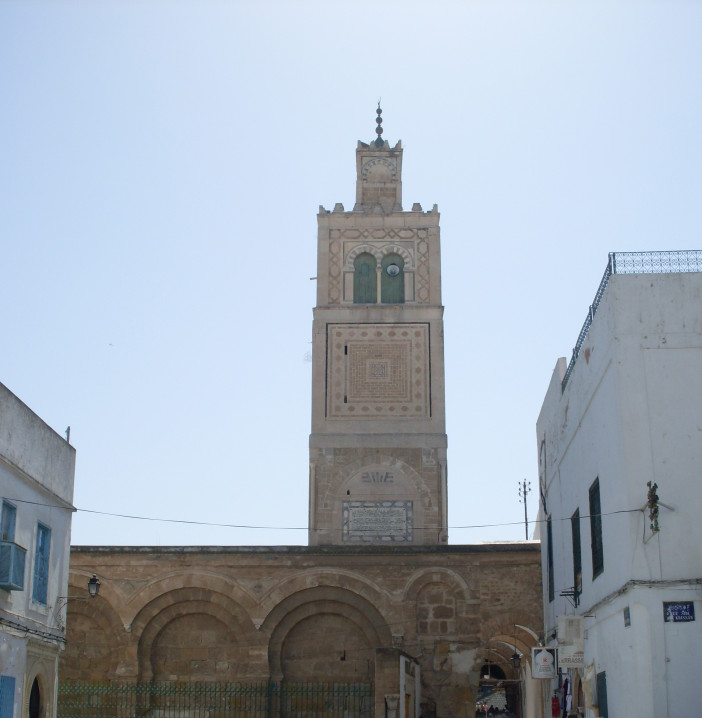Ksar Mosque
History
It was constructed in the early 12th century and is situated in front of Dar Hussein (Bab Menara). It was a royal mosque that was most likely constructed under Ahmed Ibn Kourassane's rule (1100–1128).
It was joined to the Hanafi by the Turkish conquerors in or about 1598.
Urban and Architectural
The mosque has undergone extensive construction and repair. The tower was restored in 1647/48, and its eastern face is embellished with large bows and horseshoes in the Fatimid style. The minaret is ornamented with marble and terra cotta that has been painted in a Moorish style.
A door beneath a covered walkway that leads to a courtyard elevated above the prayer hall is the entrance to the mosque. Turkish Prayer Hall, which is capped by arches supported by ancient columns and capitals, has a portico surrounding it that has columns and capitals. The mihrab, which is enormous and semicircular in shape with seven niches divided by pilasterstowards the back of the hall, is topped by a fluted half-dome in the Fatimid style.
Description
References
Mohamed Masmoudi et Jamila Binous, Tunis. La ville et les monuments, Tunis, Cérès Productions, 1980, p. 80–81
Details
Location
Tunis, Tunisia
Owners
Ahmed Ibn Kourassane
Year of Build
12th century
Drawings
Map
History
It was constructed in the early 12th century and is situated in front of Dar Hussein (Bab Menara). It was a royal mosque that was most likely constructed under Ahmed Ibn Kourassane's rule (1100–1128).
It was joined to the Hanafi by the Turkish conquerors in or about 1598.
Urban and Architectural
The mosque has undergone extensive construction and repair. The tower was restored in 1647/48, and its eastern face is embellished with large bows and horseshoes in the Fatimid style. The minaret is ornamented with marble and terra cotta that has been painted in a Moorish style.
A door beneath a covered walkway that leads to a courtyard elevated above the prayer hall is the entrance to the mosque. Turkish Prayer Hall, which is capped by arches supported by ancient columns and capitals, has a portico surrounding it that has columns and capitals. The mihrab, which is enormous and semicircular in shape with seven niches divided by pilasterstowards the back of the hall, is topped by a fluted half-dome in the Fatimid style.
Description



